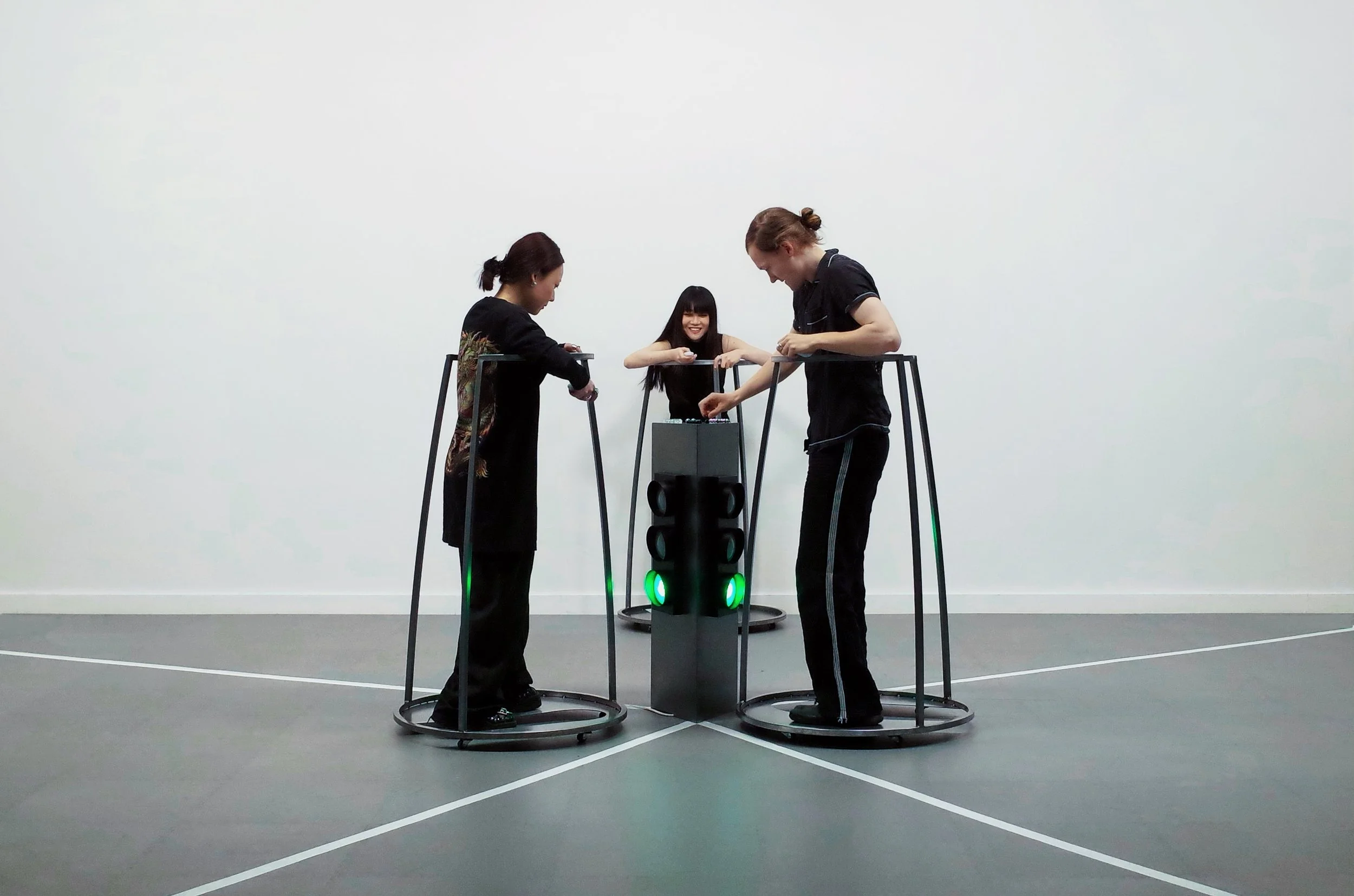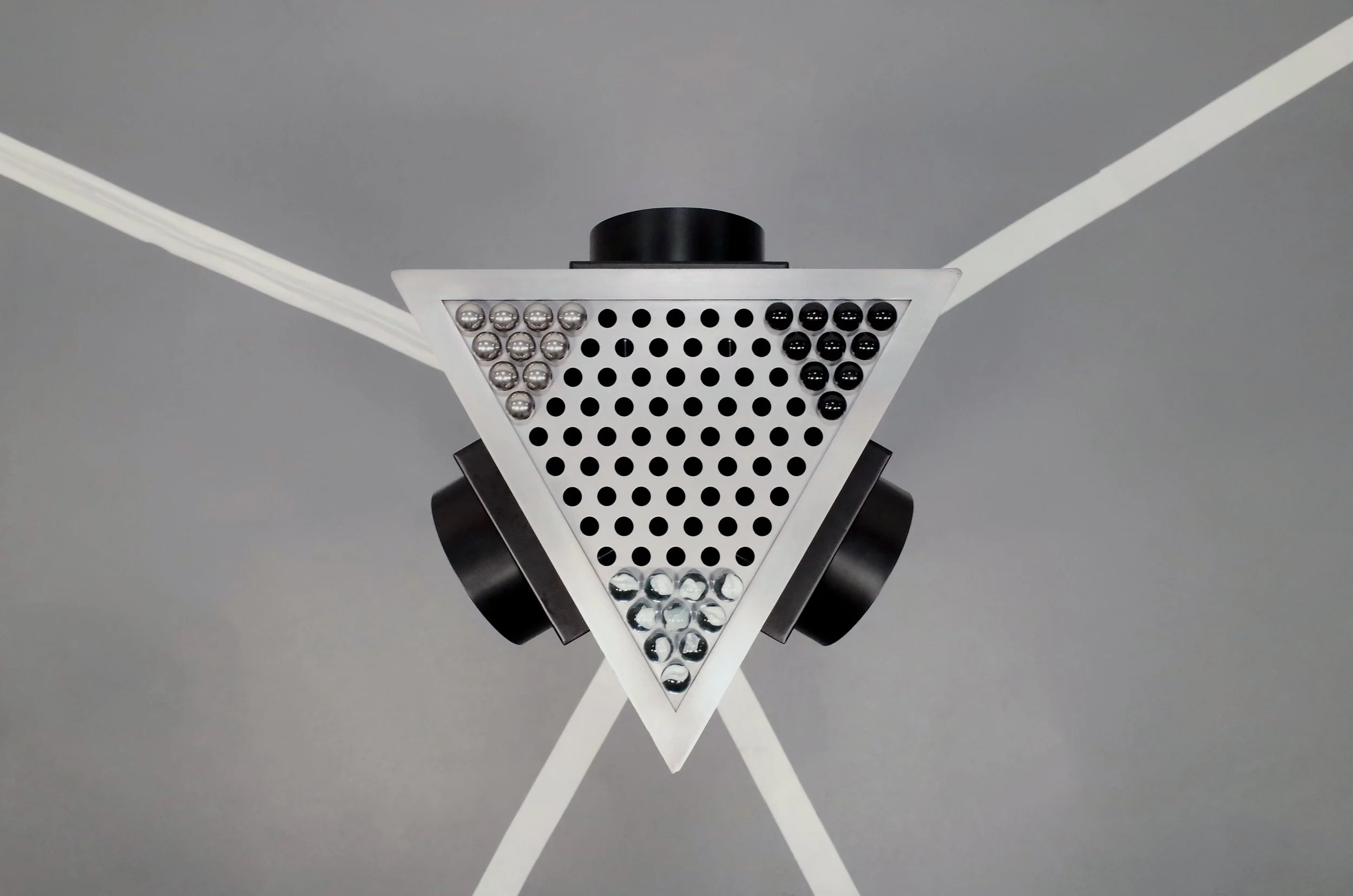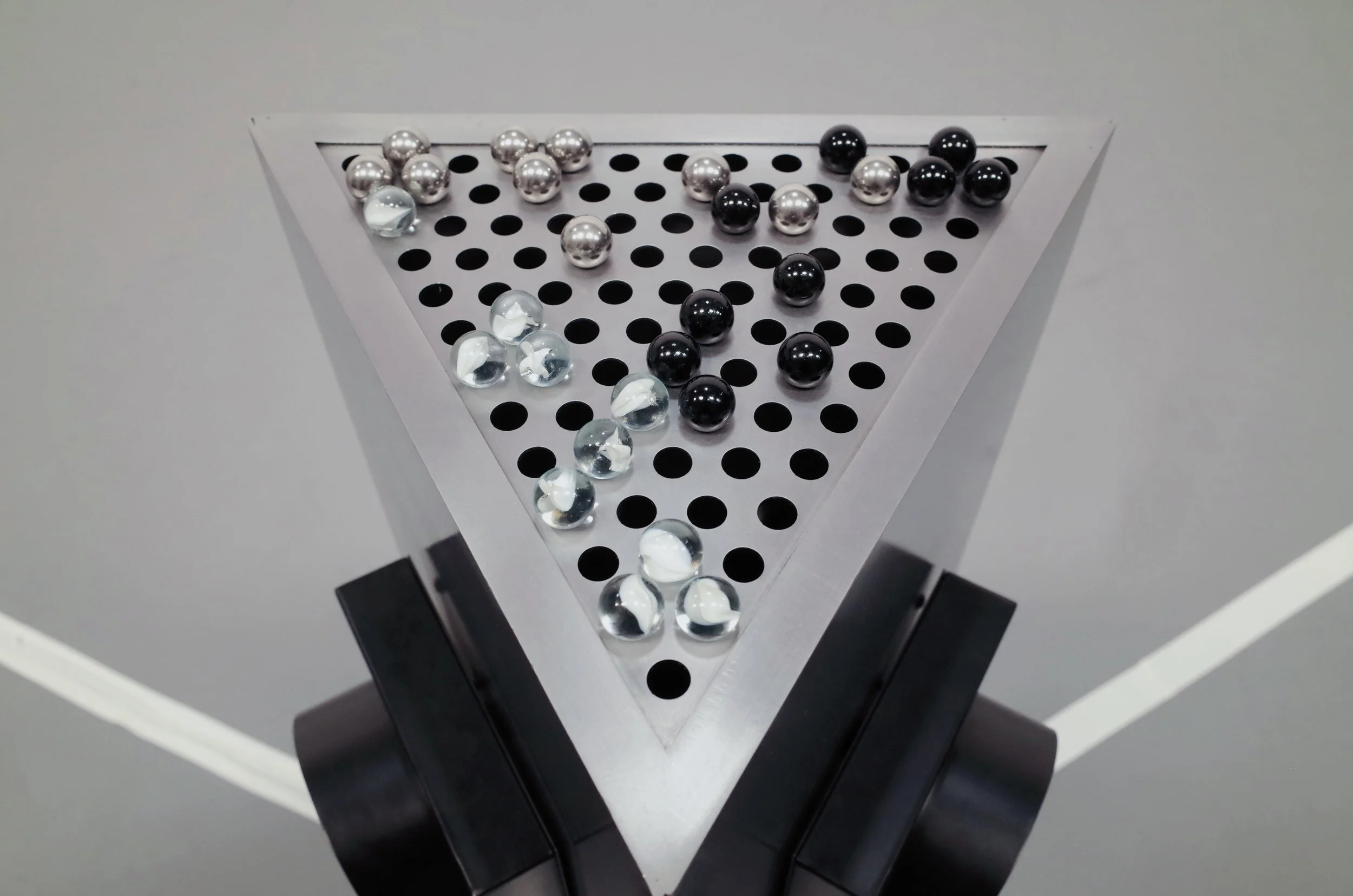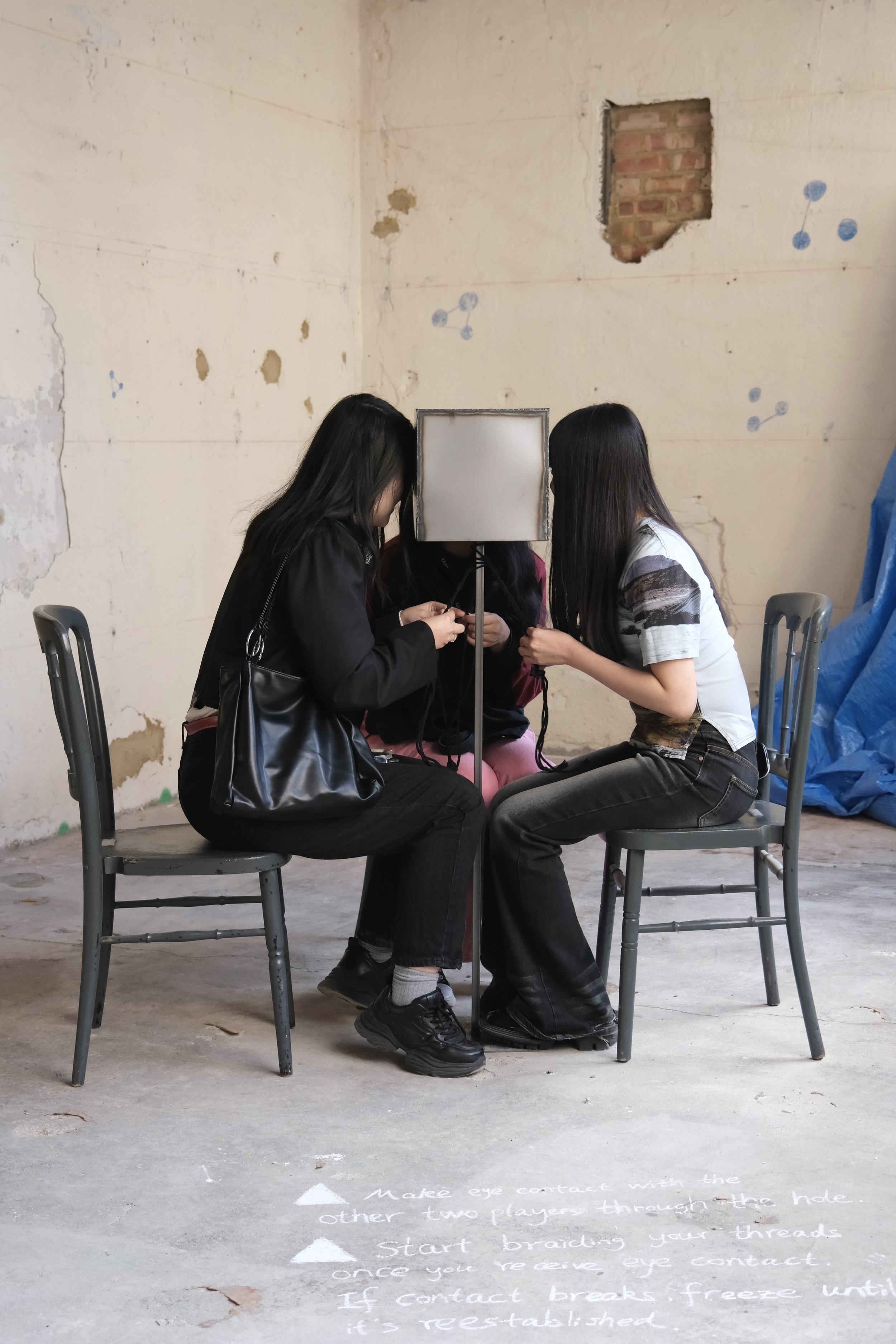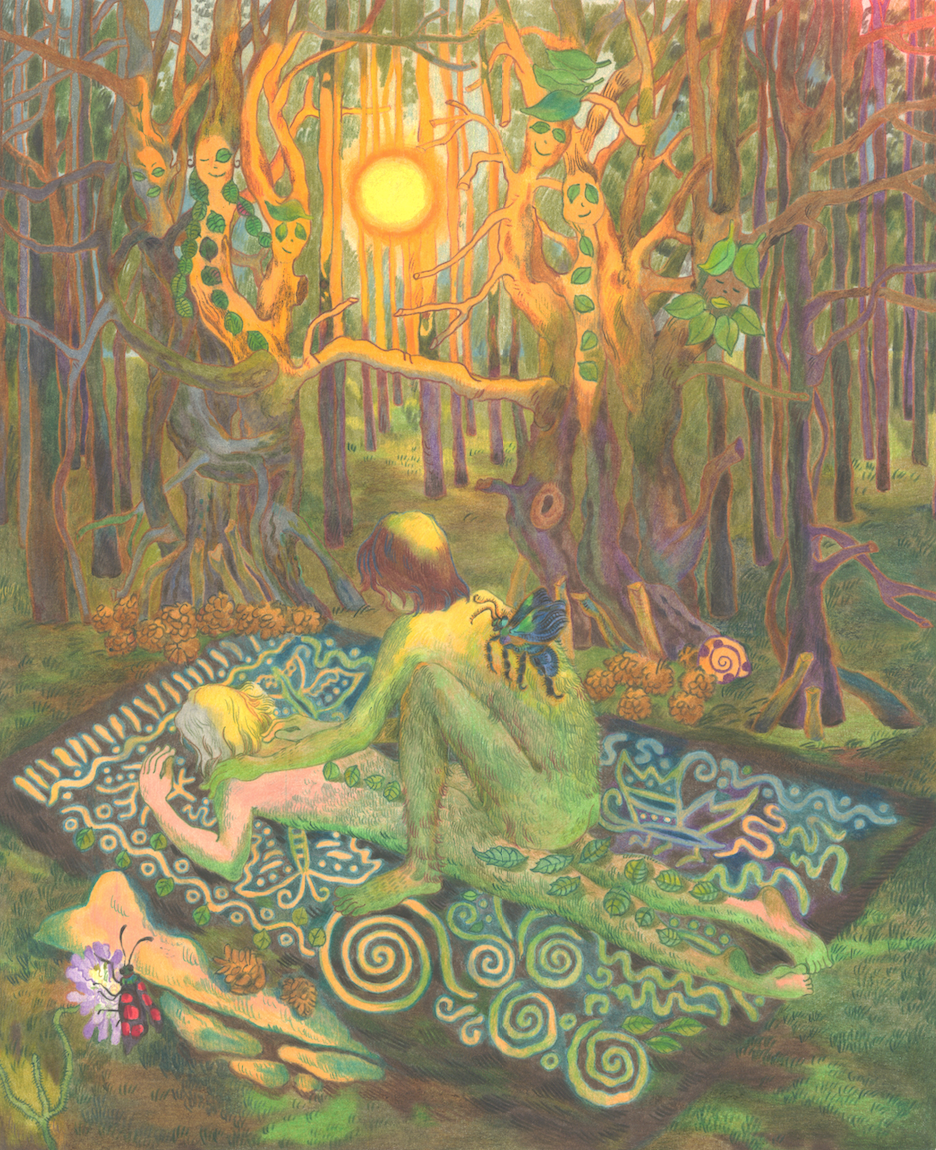10 Questions with Cizzoe Yi Wang
Al-Tiba9 Art Magazine ISSUE19 | Featured Artist
Cizzoe Yi Wang (b. 2000, China) is an interdisciplinary artist who grew up in the UK. She is working across installation, performance, sculpture, and documentary filmmaking. Conceptually driven and informed by her background in social anthropology, her practice explores human interaction as a structured game governed by societal rules.
Cizzoe holds an MA in Contemporary Art Practice from the Royal College of Art (2024), an MA in Ethnographic and Documentary Film (Distinction) from University College London (2022), and a BA (Hons) in Film Practices (First-class Honours) from Newcastle University (UK). Cizzoe’s work has been exhibited internationally, including at Candid Arts Trust (2025, London), Gallery 46 (2025, London), Tate Modern (2024, London), ASC Gallery (2024, London), The Cookhouse Gallery (2024, London), Star & Shadow Cinema (2021, Newcastle). She has also participated in major group performances at The Place (2025, London) and the Fitzwilliam Museum (2024, Cambridge).
Cizzoe Yi Wang - Portrait
ARTIST STATEMENT
Cizzoe Yi Wang is an interdisciplinary artist working across installation, sculpture, performance, and documentary filmmaking. With a background in social anthropology, she connects documentary practice and participatory projects to explore human interaction as a game, a social performance shaped by explicit and implicit rules. Through performative game instructions and participatory installations, she constructs microcosms of societal systems, inviting strangers into structured environments where group dynamics unfold. Power and control are shared equally, forming a dynamic equilibrium where control flows between participants. Her work provokes tensions between competition and collaboration, order and spontaneity, intimacy and distance. Within these spaces, Cizzoe embeds the concept “To win is to withdraw,” prompting participants to question cycles of control and consider withdrawal not as defeat, but as an alternative path through the game of social life.
Triangle, Steel, signal lights, remote controls, glass marbles, 500x400x140 cm, 2024 © Cizzoe Yi Wang
Triangle | Project Statement
Triangle is a participatory work, an interactive installation with game instructions exploring group dynamics, reflecting the coexistence of harmony and conflict in real-life interactions. The work establishes a constant equilibrium between unity and division, with three players converging at the centre while simultaneously competing against each other. Using elements like a three-cornered checker objective, a traffic light mechanism, and remote controls, players exert control over one another, either intentionally or unintentionally, demonstrating the delicate balance of power. In this game, the path to victory is paradoxically achieved by withdrawing from the perpetual cycle of control.
Triangle, Steel, signal lights, remote controls, glass marbles, 500x400x140 cm, 2024 © Cizzoe Yi Wang
AL-TIBA9 ART MAGAZINE ISSUE19
Get your limited edition copy now
INTERVIEW
You have an academic background that combines social anthropology, documentary film, and contemporary art. How have these fields come together to shape your artistic vision and methodology?
The convergence of these fields wasn't something I pursued deliberately, it emerged naturally from my long-standing curiosity about how individuals act within social systems and how they are perceived. My training in anthropology and documentary heightened my sensitivity to both individual and collective behaviours. Early in my practice, I focused on participatory and observational films, where I treated "truth" as a methodological question—when to intervene, when to step back. But during my postgraduate studies in ethnographic and documentary film, I came to realise that truth is not merely shaped by camera technique. Human behaviour is inherently performative in social settings, often unconsciously shaped by cultural norms. That realisation led me to embrace contemporary art as a space to activate social performance. By establishing rules and constraints, I aim to reveal the choreography of everyday interactions within bounded time and space.
To me, the game structure is a model for experimental installation. Rules act as hypotheses, and the interplay between collective spontaneity and individual difference generates both the process and its outcome.
Your practice spans installation, performance, sculpture, and filmmaking. What draws you to work across such diverse media, and how do you decide which form best serves a particular concept?
Engaging with others to understand social experiences is always at the core of my practice. What drives our decisions? What compels us to act? This fundamental question is the origin of almost everything I make. I find that no single medium can fully carry this complexity. To me, media are not separate choices, but different languages within the same line of thought.
In some of my works, installation and sculpture act as conditions or props, inviting the audience into a structured field of play. Performance and participation allow actions to unfold live. Film captures, condenses, and extends the life of these encounters. I choose media based on how I want viewers to enter the relational process, through which senses, and from what distance. Ultimately, what I care about most is the kind of rhythm and pause the work might leave in someone's mind.
Triangle, Steel, signal lights, remote controls, glass marbles, 500x400x140 cm, 2024 © Cizzoe Yi Wang
Much of your work explores human interaction as a structured game. What inspired this approach, and how do you translate social behaviours into participatory installations?
This approach emerged from my long-term embodied practice, observing how people navigate social situations, subtly switching "social masks" depending on the context they find themselves in. Over time, I came to see social life as a form of rule-based role-play, a structured performance within a given time and space, much like a game.
What fascinates me is that both games and social encounters unfold with internal logic, rules, rhythms, and meanings. They carry a distinct aesthetic of tension, between balance and conflict, transformation and resolution. Games in particular reveal a fundamental quality I value deeply: the subtle interplay between rhythm and harmony that exists beneath surface actions.
By constructing game-like situations, I aim to trigger brief yet charged moments of intersubjectivity. Whether as participants or observers, people are invited to recognise, reshape, and re-perceive each other, gaining new awareness of the complexity hidden behind everyday decisions and behaviors.
In Triangle, players must simultaneously cooperate and compete. How challenging was it for you to explain the rules and underlying message to the players?
The message is subtly embedded in the structure of the rules themselves. Even for those who choose not to play, simply reading the instructions can evoke a sense of the delicate balance and imbalance, between cooperation and competition.
For those who do play, this dynamic becomes physically felt. Interestingly, I've seen some participants occasionally improvise their own rules, hoping to make the game more "playable" from their perspective. I tend to welcome these deviations. I see them as alternative pathways through which participants arrive at their own pace and the meaning of the work. In fact, these moments of divergence are not disruptions, but expected parts of the system, revealing how people negotiate, adapt to, or resist imposed structures in public settings. Such improvisations become expressions in themselves.
Dancer or Rope holder?, Threads, variable dimensions, 2024 © Cizzoe Yi Wang
Dancer or Rope holder is a performance with improvisational instructions, involving five performers and four intertwined ropes. Throughout the performance, four of the performers randomly change the positions of the ropes they hold, while the fifth performer, positioned in the middle, improvises dance movements, weaving through the shifting ropes. Each interaction creates a knot in the ropes, a trace of human connection. As the performance continues, one of the rope holders is randomly chosen to take on the role of the performer, while the previous performer becomes a rope holder, creating a continuous cycle.
This work explores the improvisational choices and unpredictability inherent in human interactions. The dynamic shifts within the group, reflected in the continuous rotation of roles and interactions, reveal the evolving power relationships and interaction patterns in the group.
Dancer or Rope holder?, Threads, variable dimensions, 2024 © Cizzoe Yi Wang
In Look to the Left or Right, or Neither, eye contact becomes a tool of control, enabling or denying the act of braiding threads. How did you develop the rules for this work, and what have you observed from the participants' behaviour during it?
The rules originated from one of my hypotheses that eye contact is an exclusive contract of being seen, something I regard as sharper and more intimate than language itself. By translating this idea into written instructions, I turned the "allocation of gaze" into a measurable form of permission: determining who gets to braid, and who must pause.
Each public enactment generates new observations and outcomes. For instance, participants who already know each other often sustain eye contact with ease, placing the stranger at a disadvantage. Yet I've also seen what I call "compensatory choices," where players intentionally turn their gaze toward the unfamiliar participant to avoid letting that person down. For me, this piece becomes a lens to explore how intimacy, etiquette, and moral negotiation are continually reconfigured in real time.
You often create works where roles shift and rules evolve mid-process, such as in Dancer or Rope holder?. How important is unpredictability in your performances, and how do you view the audience's or participants' agency within these systems?
The shifting of roles and evolving rules are central to many of my works. In everyday life, people constantly reshape their actions in response to social structures, and in turn, those structures shift through collective human behaviour. This mutual unpredictability is, to me, a defining quality of human society.
In Dancer or Rope holder?, I try to use a more open set of rules to spark decision-making and the emergence of movement. My curiosity about unpredictability begins with the small, and incidental choices. For example, why do some people repeatedly jump to the same side? Why do others only swap ropes with a fixed partner? Why do some burst forward suddenly, while others crawl slowly across the floor?
Such patterns reveal subtle clues about individual habits, risk-taking, mimicry, fatigue, and social strategy. I see participants not merely as executors of instructions, they are co-authors of the system, shaping it together with the rules. I hope the meaning of this work is not predetermined; it is negotiated in action. My role is to set the boundary conditions and ensure that the system remains open to a multiplicity of strategies.
Look to the Left or Right, or Neither, Steel, threads, 30 x 30 x 130 cm, 2024 © Cizzoe Yi Wang
Look to the Left or Right, or Neither explores human interaction and group dynamics through a structured game involving three participants. In this game, eye contact can only occur between two individuals at a time, and only those receiving eye contact are allowed to engage in the act of braiding threads. The objective is to be the first to reach the end of the threads, but the rules transform eye contact into a symbolic display of power and control. The action of braiding threads becomes the translation of the internal dynamics both inside the box and within the group.
Look to the Left or Right, or Neither, Steel, threads, 30 x 30 x 130 cm, 2024 © Cizzoe Yi Wang
There's a recurring theme in your work around withdrawal as an act of resistance or even victory. How did this concept emerge in your practice, and how do you see it unfolding in different pieces?
This concept developed gradually through a series of rule-based works. Initially, I aim to construct interactive frameworks that reflect group dynamics, to highlight how, within society, our decisions are often shaped or constrained by the decisions of others, and ultimately, how we can find a way to navigate such inevitability.
Carrying this question forward, I began to think of works as infinite games, in which participants engage in continuous interaction. Over time, fatigue sets in, playfulness erodes, and competition turns relentless. Until here, I would like to invite the audience to reflect: when the game becomes exhausting, when joy fades, and the binary of winning and losing collapses, do you still want to continue? To me, withdrawal can be reframed as victory, an act of agency rather than failure. This reframing carries into life itself: stepping away can mean reclaiming autonomy and choosing a different form of triumph.
Documentation is a part of your practice as well. Do you consider the filmed or recorded element an extension of the artwork, or more of a tool for reflection and research?
I see it as both. In my practice, I regard the process of research not just as a part of the work, but often as the work itself. I believe contemporary art is less about producing single, isolated objects; it is about revealing an ongoing process of thought.
Whether in installation, sculpture, performance, or documentary, each work emerges from my ongoing inquiry. And at the root of that inquiry is my continual attempt to understand human behavior itself.
Triangle, Steel, signal lights, remote controls, glass marbles, 500x400x140 cm, 2024 © Cizzoe Yi Wang
Your performances have taken place in both gallery and institutional spaces, from Tate Modern to ASC Gallery and The Place. How do different contexts influence how your work is presented or received?
I hope each of my works can take on different forms of manifestation, while remaining grounded in its core concept. Sometimes the form of presentation shifts in response to the site, context, or specific commission.
At Tate Modern, I was given a screening space, so I presented a short film centred on my core concept: "to win is to withdraw." At ASC Gallery, a conventional white cube space with limitations on performance and audience interaction, I emphasised the communicative structure of the work, inviting viewers to focus on a wall-mounted rule panel made of metal. At The Place, a prestigious institution for contemporary performance in London with a theatre accommodating over 150 audience members, I performed a 30-minute live performance that translated the concept into movement, with myself as one of the main performers.
Ultimately, the concept comes first. I remain open to all types of spaces, just as I remain open to all media.
Lastly, are there particular social structures or human dynamics you're currently researching that may inspire your next project?
I'm currently developing a project that explores the paradox between physical and intellectual competition, beginning with the premise of "playing Go with the intensity of hockey."
This unlikely juxtaposition exposes a shared logic: adversaries must cultivate a deep understanding of one another in order to identify vulnerabilities and deliver decisive moves. The work aims to reveal how visible and invisible forms of harm, bodily confrontation, and psychological strategy intertwine within a structured game. It also investigates non-verbal communication and the tacit connections or silent alliances that form between competitors.
Ultimately, I wish to pose a question: What drives us to commit ourselves so completely to a contest of winning and losing? And what makes it so hard to walk away?
Artist’s Talk
Al-Tiba9 Interviews is a curated promotional platform that offers artists the opportunity to articulate their vision and engage with our diverse international readership through insightful, published dialogues. Conducted by Mohamed Benhadj, founder and curator of Al-Tiba9, these interviews spotlight the artists’ creative journeys and introduce their work to the global contemporary art scene.
Through our extensive network of museums, galleries, art professionals, collectors, and art enthusiasts worldwide, Al-Tiba9 Interviews provides a meaningful stage for artists to expand their reach and strengthen their presence in the international art discourse.

